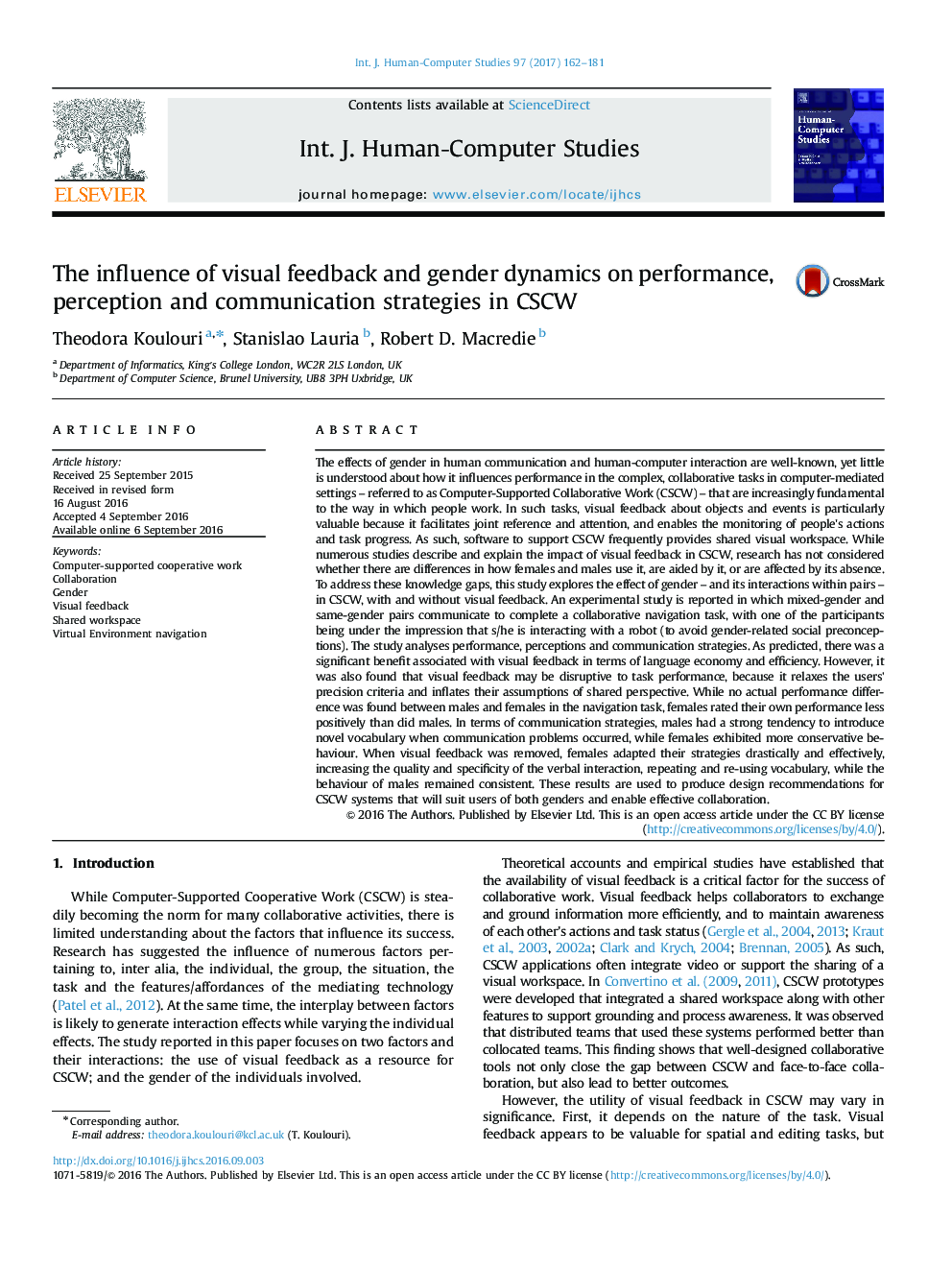| کد مقاله | کد نشریه | سال انتشار | مقاله انگلیسی | نسخه تمام متن |
|---|---|---|---|---|
| 4945876 | 1438957 | 2017 | 20 صفحه PDF | دانلود رایگان |

- Visual feedback leads to more efficient and economical interactions.
- Visual feedback has a negative effect on accuracy.
- All-female pairs compensate for the lack of visual cues through rich verbal means.
- No actual performance difference, but lower perceived performance among females.
- Females use conservative strategies, while males engage in explorative behaviour.
The effects of gender in human communication and human-computer interaction are well-known, yet little is understood about how it influences performance in the complex, collaborative tasks in computer-mediated settings - referred to as Computer-Supported Collaborative Work (CSCW) - that are increasingly fundamental to the way in which people work. In such tasks, visual feedback about objects and events is particularly valuable because it facilitates joint reference and attention, and enables the monitoring of people's actions and task progress. As such, software to support CSCW frequently provides shared visual workspace. While numerous studies describe and explain the impact of visual feedback in CSCW, research has not considered whether there are differences in how females and males use it, are aided by it, or are affected by its absence. To address these knowledge gaps, this study explores the effect of gender - and its interactions within pairs - in CSCW, with and without visual feedback. An experimental study is reported in which mixed-gender and same-gender pairs communicate to complete a collaborative navigation task, with one of the participants being under the impression that s/he is interacting with a robot (to avoid gender-related social preconceptions). The study analyses performance, perceptions and communication strategies. As predicted, there was a significant benefit associated with visual feedback in terms of language economy and efficiency. However, it was also found that visual feedback may be disruptive to task performance, because it relaxes the users' precision criteria and inflates their assumptions of shared perspective. While no actual performance difference was found between males and females in the navigation task, females rated their own performance less positively than did males. In terms of communication strategies, males had a strong tendency to introduce novel vocabulary when communication problems occurred, while females exhibited more conservative behaviour. When visual feedback was removed, females adapted their strategies drastically and effectively, increasing the quality and specificity of the verbal interaction, repeating and re-using vocabulary, while the behaviour of males remained consistent. These results are used to produce design recommendations for CSCW systems that will suit users of both genders and enable effective collaboration.
Journal: International Journal of Human-Computer Studies - Volume 97, January 2017, Pages 162-181